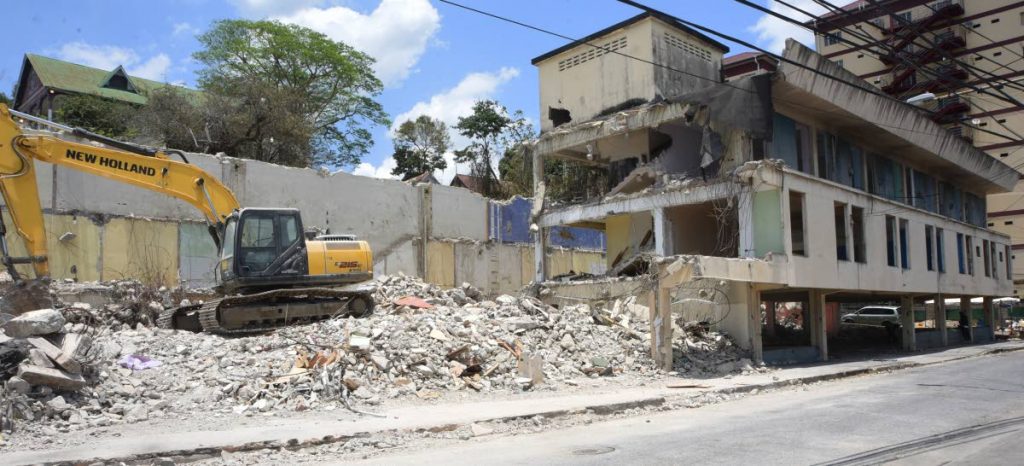Incremental urbanism

Ryan Darmanie
The words “make no little plans,” printed and pinned to the cubicle wall, stared back at me as I sat in the office of a former co-worker. Attributed to the renowned architect and urban designer, Daniel Burnham, the words struck me as being emblematic of one of the major problems still facing development.
In many ways, we have been conditioned to think of development only in grandiose terms. We are increasingly losing the ability to visualise the small, incremental changes to urbanised areas that are key to their natural evolution and longevity.
We appear to be stuck at extreme ends of the spectrum. Either we steadfastly resist any changes to neighbourhoods – in particular, suburban residential ones – or we have no respect for the existing urban fabric and build large, out-of-scale, contextually-inappropriate developments. But urban development is not like playing the Game of Thrones, where “you win or you die,” because in this instance there is a preferable middle ground.

Incremental development happens at many scales: at the building scale, it may involve additions to structures such as an additional storey, the extension of a room, or an attached dwelling unit with a separate entrance; at the lot scale, it may involve constructing an additional detached small apartment unit (granny flat); at the neighbourhood scale, it may involve the gradual intensification of development, where a street evolves from single-family homes to duplexes to row houses, and eventually to larger apartment buildings over time.
When this type of development is happening constantly and gradually over a period of time, no one change results in a major disruption to the neighbourhood. Places evolve to meet the needs of individual households and the wider community. Each new modification respects the existing context, so that as growth occurs, aspects of character remain.
Unfortunately, too often the approach that is taken is one in which only sweeping changes can be envisioned. Again, we see one of two outcomes: either the unsustainable use of large tracts of virgin land, or the amalgamation of numerous lots in urbanised areas, to build large planned developments.
Does it not occur to us that an enabling environment for incremental development could feasibly aid in meeting our housing needs? Many of our neighbourhoods are replete with empty or underutilised lots that can be filled in with development that represents the next increment of intensity in comparison to the adjacent structures.
An inability to think about development in this way means that ultimately we are typically in the business of disrupting nature, or disrupting the charms, rhythms, and granularity of existing neighbourhoods. And, it leads to a tendency to oversize everything.
We design large public spaces that are, more often than not, cold, uninviting, and underutilised, instead of more intimate and comfortable human-scaled spaces. We design buildings that are spaced far apart from each other, which leads to a less pedestrian-friendly environment. We plan for bigger commercial spaces that cater to larger businesses that can afford higher rents, while squeezing out small ones that need to limit overhead expenses. We require unnecessarily large minimum lot sizes, in particular in our cities, which increases the amount of land that must be consumed for a development, and therefore raises the cost of housing and favours wealthier developers.
The cities around the world that people most adore for their charm, vibrancy, and public life are, more often than not, those places that continue to evolve incrementally. It’s a far cry from the quite common, assumedly witty, view that we need to demolish and start from scratch in our cities in order to improve them.
In doing research for an urban plan that I am currently working on for a client, I came across Plan Cincinnati, which serves as the blueprint for the future of that Ohio city. The following words resonated with me: “Cincinnati doesn’t need to create a new city, we simply need to build on what we already have: our natural beauty; our historic resources; our unique neighborhood character; our exceptional amenities; and our proximity and accessibility.”
It’s a remarkable statement considering that parts of Cincinnati were, not too long ago, considered to be in decline. In fact, the district called Over the Rhine was called “ground zero in urban decline,” and was, rather recently, named the most dangerous neighbourhood in America.
Despite this, the city was able to recognise and cherish what assets it did have. Over the Rhine is now booming. A valuable lesson indeed.
Ryan Darmanie is an urban planning and design consultant with a master’s degree in city and regional planning from Rutgers University, New Jersey, and a keen interest in urban revitalisation. You can connect with him at darmanieplanningdesign.com or email him at ryan@darmanieplanningdesign.com


Comments
"Incremental urbanism"